#a study in sepia
Text
Proxemics and Deduction 01
Proxemics is defined as the branch of knowledge that deals with the amount of space people feel is necessary to set between themselves and others.
It’s a fascinating field that we, as deductionists, pull from on a daily basis whether we’ve been aware of it or not. If you see two people walking together, how do you gauge their relationship? Lovers, family, friends, colleagues, mortal enemies; all options, along with many more. There are quite a few scenario-specific examples, such as coworkers carrying the same identification tag, or a couple each tending to a stroller, but without fail, as a supplementary measure, or more often, as an introductory observation, we fall to proxemics. We look for levels of comfort, and one of the best ways to gauge that is physical closeness. Proxemics is one of several modes of nonverbal communication, ranging from something as simple as touch (haptics), to something as obscure as use of time (chronemics).
To explain proxemics in its most concrete state, we can reference Edward T. Hall’s interpersonal distances of man.
Imagine four concentric circles, in the center, a person. The first three circles are at 4, 8, and 12 feet respectively. Now add one more circle at 1.5 feet. From nearest to farthest, you have the intimate distance, personal distance, social distance, and public distance. Each of these measurements is used to represent the acceptable levels of closeness in various situations. It is important to note that Hall’s model, and thus Hall’s denoted application, is limited to Western ideals of social conduct. While these same measurements may not fully apply cross-culturally, all human-hosting spaces will model some form of proxemics. There will always be bounds between intimate, personal, and public space, but occasionally, they will be marked at different points. The difference between a friend and a colleague may be a matter of a few inches, and yet breaching that unspoken rule, can cause immense discomfort. Gauging this space, or lack thereof, is a major aspect of social deduction. It’s one of the first behavioral observations we utilize as deductionists, both new and old.
Before marital status, even before handedness, we have social connection. We all see it, I would venture to say we intuitively understand it, so much so that the lines between observation and deduction begin to blur.
The basics are in the textbook application, but there’s much more to proxemics than reciprocal relations. What about the colleague who’s getting a little too close for comfort? The wife who’s preparing for an imminent divorce? The regular with the irrational phobia?
Deduction, in many ways, is best dissected through deviance.
Proxemics sets a baseline for us to observe and through this baseline, enables us to detect changes. These changes speak volumes. To take the first example. You notice two coworkers behind the counter in a cafe. Their relationship status is unknown - simply colleagues, barely acquaintances, best friends - it's unestablished to you. You watch them interact; there’s limited camaraderie, few words exchanged from one, a few too many from the other. Is worker B simply over communicative, or is there more to it? You see B encroach on what would be appropriate for a colleague (social/personal depending on the available space - which is something I’ll touch on in a moment), but A steps away, leaving B in the next available concentric circle. This is something we would likely notice without the knowledge of proxemics, but would be unable to categorize beyond a vague ramble about “intuitive social knowledge”. By referencing an established baseline we streamline the observation and solidify it in the process, creating a new building block to jump off of. “Individual A looks uncomfortable” turns into, dare I say, a mathematical reference point for any and all future behavior.
It is important to acknowledge that this particular example is not representative of Person A’s baseline. It is also important to acknowledge that not every person follows the same baseline, and that certain situations will inherently alter expected baselines. Let’s take the example of a very small area behind the counter in this imaginative cafe. Informal colleagues will likely be forced into what would be considered personal or even intimate space. Proxemic expectations change not only cross-culturally, but by environment. The best way to understand proxemic norms in non-standard situations, is to spend some time observing many people who are exposed to that specific situation. If you simply go off how you would feel in that situation, you are setting a baseline with a possible bias. People tend towards environments they're comfortable with. There is, after all, a reason they’re behind that counter and you’re not.
Now, one might argue that if the proxemic standards are constantly changing, the applications of the specific measurements are all but useless. While it is true that the baselines are constantly changing by environment, there is an overarching standard. When the space is provided to do so, people will revert to defined patterns. And in situations where the space is not available, using this model, you can deduce a whole host of things with the proportional proximal input and subsequent behavior. Personality, relationships, levels of comfort and discomfort are all vital bits of information.
One interesting morsel I feel like throwing in here is the fascinating subject of lines. Lines, queues, whatever you want to call them are one of the best places to observe shifting proxemics in action. As more people enter the queue (when the space is confined) the spaces between individuals will decrease until they reach a social breaking point, at this point the line will turn, often veering out of the designated queue area. Onto another cafe example (can you tell I got coffee this morning). One person walks up to the register. At this point, the only proximal opportunity is between the cashier and the patron - which is generally defined by the width of the counter between them. Now, another person walks up and starts a line - depending on this individual’s personal proxemic preference, the standard in the line is set. The next person who joins the line will tend to follow the set amount of spacing, and the next person, and so on, as space allows. The patrons up ahead, uncaring of what’s going on behind them, will typically not adjust their positions, leaving a continuous theme of compression as the line progresses, until someone breaks and opts to turn the line. If there is no way to turn, that same slinky effect will move its way back up the line as people become aware of the discomfort behind them. I observed this in action this morning while waiting at my local cafe. Because there is continuous movement, the comfort of the line is rarely at the forefront of anyone’s mind; their priority is to reach the front, not be optimally comfortable while waiting. If, for example, people were queuing onto a bus (which for some reason didn’t have seats) and had to stand there for a couple hours, everyone would evenly disperse. In scenarios with movement, one person’s typically insignificant social preference has a domino effect on those behind them. There’s an observable push and pull of conscientiousness and the introversion-extroversion spectrum. We adjust subconsciously to the line’s collective consciousness, bow down to the social conduct overlord, and occasionally get squished in the process. Take some time to observe this phenomenon next time you’re waiting. Be a menace and try standing too close or too far and watch how uncomfortable you, and possibly others, get. Next time you're first in line, set a weird tone, but remember, with great power comes great responsibility.
The last topic I’m going to be touching on is something I can find absolutely no research on (great intro, I know), so bear with me. I’d like to discuss proxemics in terms of the inanimate object - something that I’m very poorly defining, but I believe works in the context of this article. I’ve been taking notes on this subject for some time, but only in my own geographical area. It’s proved wildly effective at predicting where people will go, so I took some time this morning to watch live CCTV footage of city walkways in other cities, both in the US and nationally (London, Oxford, and Tokyo). This is simply anecdotal, but through this limited observation it became clear to me that people will walk in the middle of their perceived space, cross-culturally. This sense of available space changes depending on the presence of a roadway, varied storefront structure, as well as other people. If there is no one coming towards them, people will tend towards the middle of the walkway, often veering slightly towards the right or left side (driving/passing side of the given country). Individual patterns can answer questions about openness, day to day activities, and conscientiousness. For instance, a person on a walkway with no one coming towards them who is walking distinctly on the right side (in a right-driving country) may be very high on the conscientiousness scale, and/or their typical routine involves walking among many people. These sorts of deductions can be further parsed using other observations.
If we accept the premise that people tend towards the middle of their perceived space (which, if other people are approaching, may be one side of a walkway - effectively leaving their “middle” veered to one side), then deviance will usually stem from moving towards, or away from, something. There are a lot of fun applications to this, for instance, deducing how much of a hurry someone is in based on how likely they are to go for the most acceptable path or the quickest path, at baseline. For example, I tend to opt for the most acceptable/safest path, I have high conscientiousness and high neuroticism according to the OCEAN model. But today, I jay-walked through a busy street to get somewhere before my order was ready. This is an example of considering the safest path. Considering the most acceptable path has some predictive applications. As I was taking a break between shifts the other day, I noticed that people who wanted to walk into a store changed their path relatively far in advance. In this case, they were heading towards something. I was able to easily predict which store someone might go into well up to a block away, when utilized in tandem with other observations.
Early on in my research journey I found that in videos of people walking on the street oncoming individuals were encouraged to veer away from the person filming. I prioritized finding CCTV to avoid this, but found it to be an interesting example of people changing course to avoid something. There were also a few people who veered into the camera's view. Something as simple as this may give clues to an individual's level of openness and extraversion.
In public situations where a person must veer into an oncoming flow of people to cross to their desired destination, they will often wait until they’re near adjacent to it; in a more desolate walkway, they’ll veer much earlier. Possibly charting their whole course along the less-acceptable pathway.
I label this idea as the proxemics of objects because when walking, we seem to assign objects their own personal bubbles. We don’t walk near the table line of a restaurant unless there’s a specific reason to. We tend not to encroach on their space, in the same way we consider people. Perhaps it’s more for our comfort than the objects’, or perhaps we’ve all been traumatized by the videos of people dressing up as bushes. Either way, I found it interesting enough to throw in here, and if you’re seeing this, you found it interesting enough to read (yay). I’ll be further exploring the topic of object spatial awareness in a future article I have planned.
Thank you for reading - below are some relevant articles -
https://www.sagepub.com/sites/default/files/upm-binaries/11826_Chapter8.pdf
https://thereader.mitpress.mit.edu/understanding-personal-space-proxemics/
Hall, Edward T., et al. “Proxemics [and Comments and Replies].” Current Anthropology, vol. 9, no. 2/3, 1968, pp. 83–108. JSTOR, http://www.jstor.org/stable/2740724. Accessed 6 Dec. 2023.
#deduction#deductive reasoning#sherlock#a study in sepia#sherlock holmes#social science#proxemics#social psychology
27 notes
·
View notes
Text
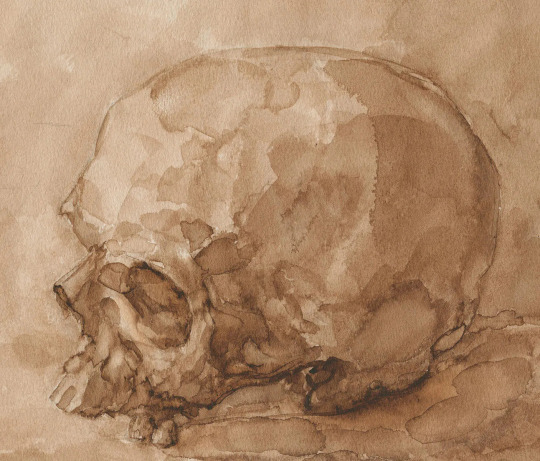
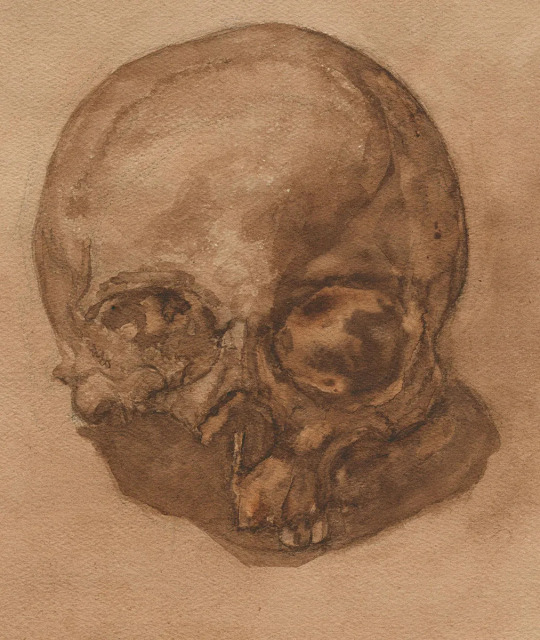
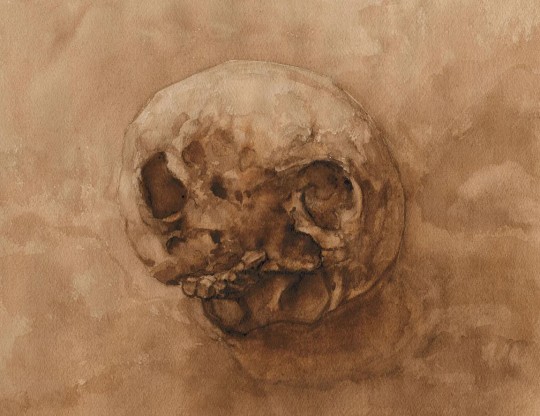
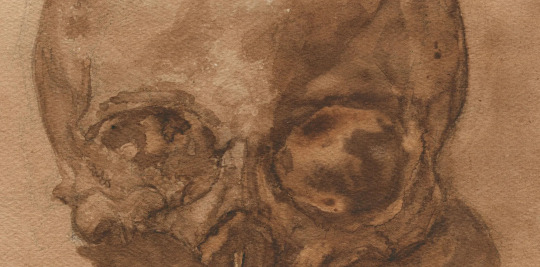



179 notes
·
View notes
Text
brba / bcs

nacho varga | gustavo fring | mike ehrmantraut
art study C:
no reposting!!
79 notes
·
View notes
Text

"Studying the Talmud", painting by Lazar Krestin
German vintage postcard
#vintage#studying#tarjeta#lazar krestin#briefkaart#jewish#lazar#postcard#photography#postal#carte postale#german#sepia#jews#ephemera#krestin#historic#judaica#ansichtskarte#studying the talmud#postkarte#talmud#painting#postkaart#photo
13 notes
·
View notes
Text

#today's words were#remember#frown#sepia#I'm so sorry#noe archiviste#vnc vanitas#noé archiviste#vanitas no carte#the case study of vanitas#vnc#les memoires de vanitas
14 notes
·
View notes
Text
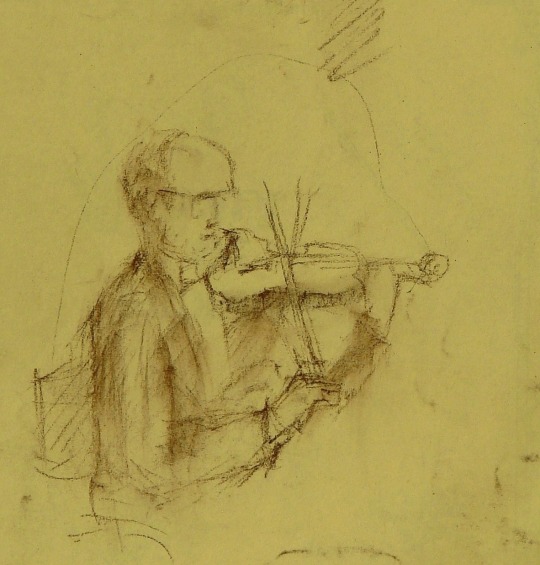
Sketch - violinist (musicians series)
Sepia on colored paper
#violinist#sepia#croquis#musician#filarmonica#philharmonic#orchestra#figurestudy#portraiture#figurestudydrawing#artwork#figurativeart#figurative#portrait#retrato#draw#drawing#studies#livemodel#musicianseries#musiciansfrombrasov#figurative painter#painter on tumblr#painter#figure study#sketches#figure
30 notes
·
View notes
Text

tried my hand at practicing line, still got a ways to go but it looks neat
ref photo and vers w/o stars below


#tarta.png#tartart#microsoft paint#mspaint#van gogh#art study#sepia#landscape#lines#artists on tumblr
6 notes
·
View notes
Text

Landscape study done for class, Acrylic wash on gessoed watercolour paper, 2022
24 notes
·
View notes
Text
Stock Images; Read and Learn
Glasshouse Images presenting works by Artbook
HAVE AN IMAGE SEARCH REQUEST? GET IN TOUCH!
Search our collection or simply send us an email with your specific request to photos@glasshouseimages or give us a call at (646) 256-1999 and we’ll make sure your search is a top priority.
Also, check out our vintage collection, Circa Images.
Glasshouse Images is a boutique stock photo and…

View On WordPress
0 notes
Photo

#quick #sketch after a #watercolour #work that I got in #Pinterest #study in #sepia #marker and #watercolor on the background. #sketching #drawing #dessin #disenho #dibujo #boceto de #estudio #marcador y #acuarela https://www.instagram.com/p/CoWr4XDO3LH/?igshid=NGJjMDIxMWI=
#quick#sketch#watercolour#work#pinterest#study#sepia#marker#watercolor#sketching#drawing#dessin#disenho#dibujo#boceto#estudio#marcador#acuarela
1 note
·
View note
Text
Present Deductions 2023
I was very excited to see this guide from @studies-in-the-art-of-deduction come across my dashboard! The following contains a relatively casual series of observations and deductions pertaining to the Christmas gifts from my immediate family.
Present #1
The size, box structure (lid over base), weight, and movement suggest shoes.
Relatively heavy which suggests boots, possibly intended for our upcoming family trip. There is free movement within the box and I can hear the tissue paper.
The box lid extends over the primary container on 3 out of 4 sides.
My mother knows I like Doc Martens, a quick google shows the doc martens box has two holes on either side, which are present on this gift. Many shoe boxes have holes, but Doc Marten holes specifically extend over the edge onto the top of the box. Given the fact that I own multiple pairs of Doc Martens and have not outright asked for them this Christmas, my earlier theory of boots specifically for the upcoming trip (Christmas in New York) is looking more likely. I have no idea which direction my mother may have gone in terms of style, but I know she has an affinity for soft unstructured leather.
This being said, I have a few notes. Yesterday, my mother and I went out shopping, during this outing she purchased me a pair of loafers. It is possible that she reconciled the fact that loafers and boots are dissimilar, which both supports my boot theory and discredits the possibility of other styles, but this does make me slightly wary, especially because I pitched the loafers with the intention of using them on our trip.
The second issue is that there is the possibility of a box inside of the Doc Martens box. I am not overly concerned with this, as the presence of the Doc Martens box would suggest that she bought Doc Marten shoes recently, and I know that she did not buy them for herself.
Third, it is possible that this box design is common for other shoe brands, possibly one which she purchased recently for herself, which led her to repurposing the box. I searched a few major brands, and none of them had the unique extending holes. The only shoes my mother bought recently belong to a brand that does not sport any box holes. It is possible that this box inside a box phenomenon is due to the heavy soles of the boots hitting the sides of the box. Beyond this, my efforts would be distilled into aimless googling. Aimless googling is an option, but at this time my confidence in the answer is not outweighed by the suspicion that I’m wrong.
Present #2
The lack of movement in the box suggests something relatively fragile. The metallic cling is familiar to that of glass blown ornaments (confirmed by comparing the sound to other ornaments on our tree). My mother has a habit of buying both myself and my brother an ornament each year, it is highly likely that this box contains mine. Due to my interest in Sherlock Holmes and my recent excursions to various historical conventions, I believe this ornament is related to the canon Sherlock Holmes (combines Sherlock with my historical interest), or perhaps Victorian London.
Present #3
This particular present is rather tricky. The top of the box has been cut open and wrapping paper has been placed around it. The squishy feeling of the box is reminiscent of a crude cardboard, which suggests that this present was shipped. The packaging would not be opened if this were the box for the actual product. Given these facts, it can be inferred that my mother opened the box to check the contents when it arrived and wrapped it up. The box is light, and has very little movement within. The sound is very faint. My mother mentioned buying me a hat for our upcoming trip. I am guessing this present contains that hat, as there is no other box that suggests it, and the hat is unlikely to be a stocking stuffer.
Present #4
This present is from “my brother” - ie. a present from my mom that she put my brother's name on. Clearly a paperback book, given the size, lack of box, and bendability. 4 words show through the wrapping paper “serial killers” and “great cons”. The google search “serial killers + great cons + book” leads me to this amazon listing https://www.amazon.com/True-Crime-File-Kidnappings-Survivors-ebook/dp/B09F5JHK16
Cross-referenced with the font and we have a match.
Present #5
By far the trickiest present, this package once again falls into the shipping box category. The box is not light, but it’s also not overly heavy. It’s lighter than the shoe box (Present #1).
I believe there’s internal packaging, perhaps a bubble wrap of some kind. There’s almost definitely another box/container inside, but it’s either a flimsy package or is padded with packaging materials. I am rather excited to say that I have no idea what this present contains. I’m going to take an educated guess and say it might be a Victorian reenactment dress, given my recent increase in that specific interest and the general box size/weight, but I don’t declare that with any level of certainty.
I encourage you all to post your own present deductions, and to check out @studies-in-the-art-of-deduction's guide to inform your endeavors. I look forward to posting the answers to this particular set of gifts after Christmas.


My best wishes to you this Holiday Season!
#deduction#sherlock holmes#deductive reasoning#bbc sherlock#sherlock#christmas#christmas gift#studyblr#a study in sepia
15 notes
·
View notes
Text
Studying history in the Temeraire universe must get really strange once dragons are recognized as historical figures in their own right. You read about Temeraire in class. He’s one of the most important figures in the napoleonic wars and the subsequent period of reforms. The photograph of him in your textbook is a sepia toned one from the 1860s. You know intellectually that he’s still alive but you don’t really comprehend it until you catch his cameo in The Dark Knight Rises. He insisted on making an appearance because it was filmed in his captain’s childhood home. He’s playing himself. He has a four line conversation with Batman.
#Temeraire#Wollaton hall really is Wayne manor in TDKR#so Laurence grew up in Batman’s house#which is one explanation for why he keeps adopting so many kids
2K notes
·
View notes
Text
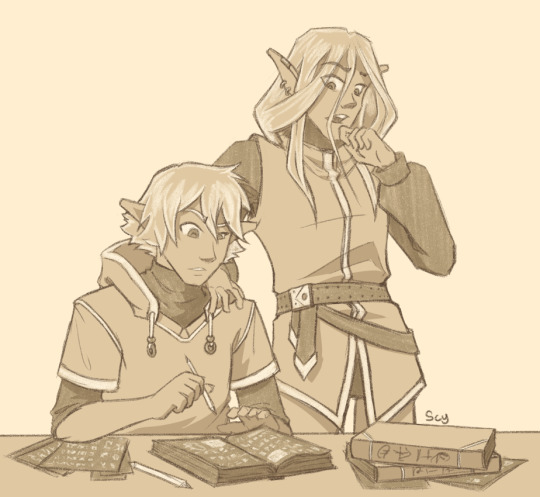
#scy arts#art#digital art#illustration#original characters#oc art#elf#dragoon#fantasy art#study#books#sepia aesthetic#zack#drano#sendrask
0 notes
Text

"Study", painting by Albert Penot
French vintage postcard
#old#postcard#postkaart#french#albert#painting#vintage#briefkaart#postal#ansichtskarte#albert penot french#ephemera#photography#photo#postkarte#tarjeta#study#penot#historic#sepia#carte postale
5 notes
·
View notes
Text
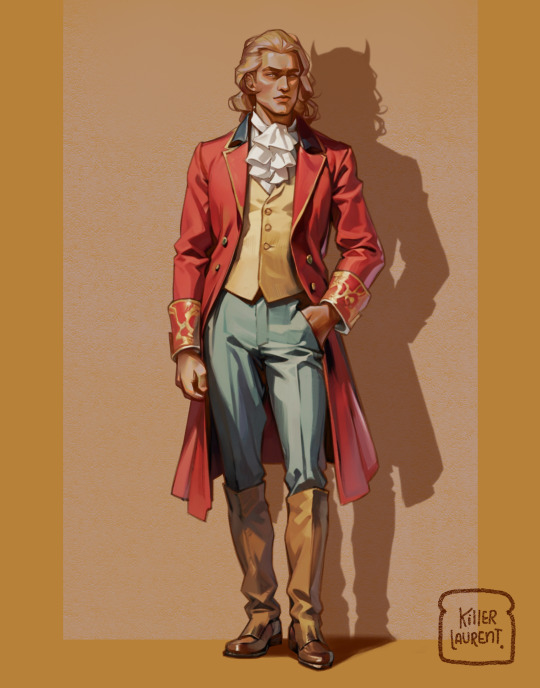
(Prince Lestat) Study in sepia and ocher
#digital art#art#fantasy#vampire chronicles#anne rice#vampire#fan art#lestat fan art#lestat the vampire#lestat#prince lestat#dark academia#sepia#shadows#lights#warm#gold#lestat book#lestat art
316 notes
·
View notes
Text

Sketch - The pianist (musicians series)
Sepia on paper
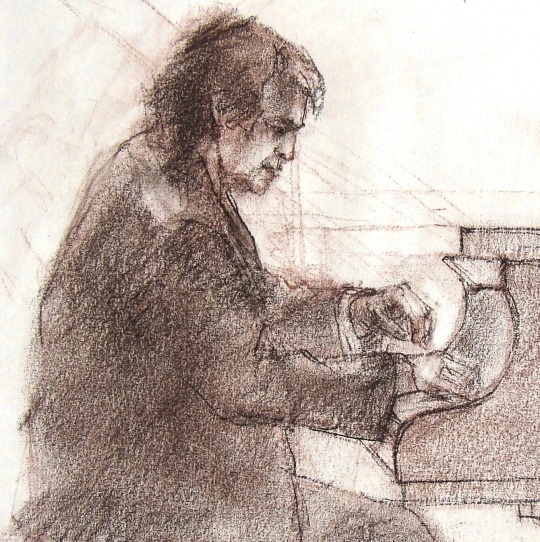
#pianist#sepia#croquis#musician#filarmonica#philharmonic#orchestra#figurestudy#portraiture#figurestudydrawing#artwork#figurativeart#figurative#portrait#retrato#draw#drawing#studies#musicianseries#musiciansfrombrasov#figurative painter#painter on tumblr#painter#figure study#sketches#figure
31 notes
·
View notes